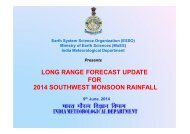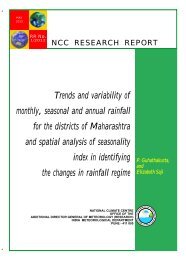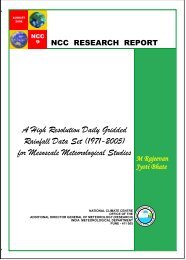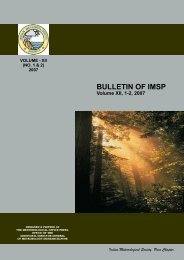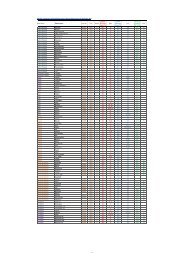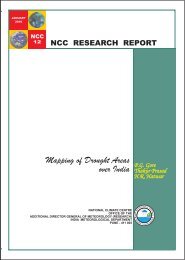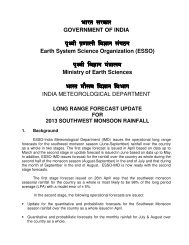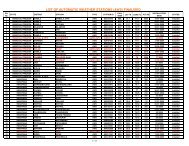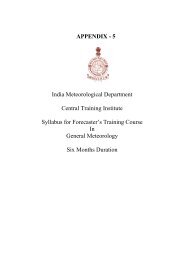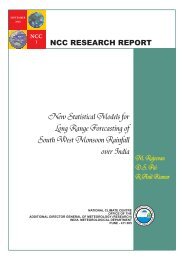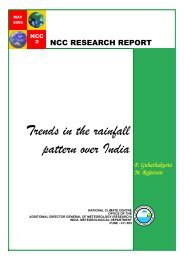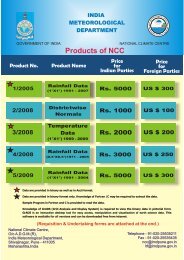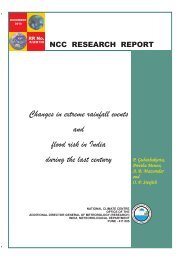Create successful ePaper yourself
Turn your PDF publications into a flip-book with our unique Google optimized e-Paper software.
31<br />
12.3.6 The remaining sections of the report will deal with typical synoptic<br />
situations causing strong and weak northeast monsoon conditions in the various<br />
meteorological sub—divisions of the south Peninsula.<br />
13. Severe cyclonic storm in the Bay of Bengal crossing Tamil Nadu<br />
coast and causing strong to vigorous monsoon-<br />
2 to 6 <strong>No</strong>vember 1966.<br />
13.1 Storms and depressions form a very important category of synoptic<br />
situations which cause active to vigorous northeast monsoon in the south Peninsula.<br />
The heaviest falls occur when they cross coast and the extension of rainfall<br />
to the north (discussed in paral2.1.4) is characteristic of these systems<br />
during this season.<br />
13.2 Storms and depressions coming close to or crossing the coast of the<br />
Peninsula are mostly in October and <strong>No</strong>vember; their number decreases considerably<br />
in December. In <strong>No</strong>vember and December, cyclonic storms are more numerous<br />
than depressions. The entire Andhra Pradesh - Tamil Nadu coast is liable to be<br />
affected by the storms and depressions in October; later in the season south<br />
coastal Tamil Nadu is more vulnerable than the coastal line further north. The<br />
coastal area near about Pondicherry-Cuddalore-Nagapattinam is the place where<br />
the maximum number of storms and depressions cross coast in <strong>No</strong>vember and December.<br />
In this section, we will discuss a typical cyclonic storm which crossed Tamil<br />
Nadu coast and caused strong to vigorous monsoon conditions in the south<br />
Peninsula.<br />
13.3 A depression which formed over the south Andaman Sea on 1 <strong>No</strong>vember<br />
1966, moved westwards, intensified into cyclonic storm and was over southeast<br />
Bay with its centre near 9.5°N 88°E on the morning of 2 <strong>No</strong>vember (Fig. 13.1).<br />
24 hour pressure change pattern became more organised/and the maximum negative<br />
pressure changes were along Tamil Nadu coast and <strong>No</strong>rth<br />
about —3 mbs).<br />
Except for a feeble cyclonic circulation over Kerala in the very low levels,<br />
the upper air flow pattern (Fig. 13.2) was mainly one of northeasterlies over



